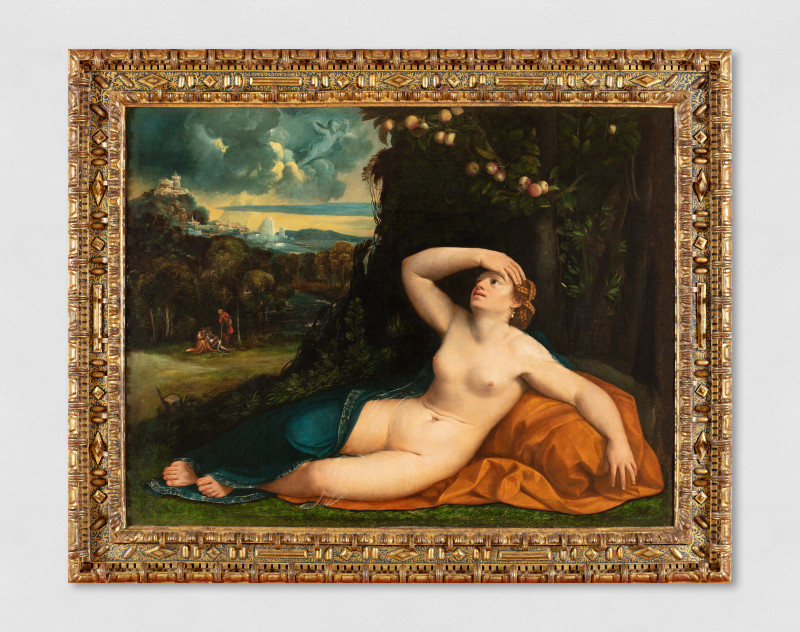-
Biography
Giovanni Luteri, known as Dosso Dossi (Tramuschio, Italy c. 1490 - Ferrara, Italy 1541/2)
Nicknamed Dosso Dossi, probably after the name of a small family property near Mantua, there is no certain reference for the artist's place of birth, dated between 1486 and 1487. Similarly, there is no certain information on the artist's training, of which only a first commission is attested in 1512, for the Gonzaga family in Mantua.
According to Vasari's account, consistent with the 1512 commission, Luteri is a pupil of the Ferrara painter Lorenzo Costa, who worked from 1505-1506 at the Gonzaga court. From 1513, he was in Ferrara, at the court of Alfonso d'Este, and during 1514 he is recorded as residing in the Castello Estense, as a court apprentice whose multifaceted role was not only concerned with artistic production, but als of the management and organisation of the representation and celebration of the dynasty.
The city of Ferrara in those years was home to artists such as Titian, Michelangelo and Giulio Romano; collections with Flemish painters and prints of the German masters were exhibited, all material to which Luteri had access and which profoundly influenced him. At the same time, the artist moved between different cities: in 1516 he was in Venice, then Florence, in 1518 he was in Modena.
In the following years, the artist's work was again linked to the Este court, until 1530 when, with his brother Battista, he worked in the Villa Imperiale in Pesaro, owned by the Duke of Urbino Francesco Maria I Della Rovere and his wife Eleonora Gonzaga. Luteri had meanwhile become famous throughout northern Italy when in 1531, again with his brother, he moved to Trento for the fresco decoration of the Buonconsiglio Palace, where the bishop of Trento resided. In 1532 the artist returned to Ferrara, just two years before the death of Duke Alfonso, and in 1540 he received his last commission from the Este family.
Luteri died between 1541, when he and his brother were reimbursed for a stay in Venice, and 1542, when he was described as deceased in a legal deed.
Photo UniCredit Group (Sebastiano Pellion di Persano)
-
Works



